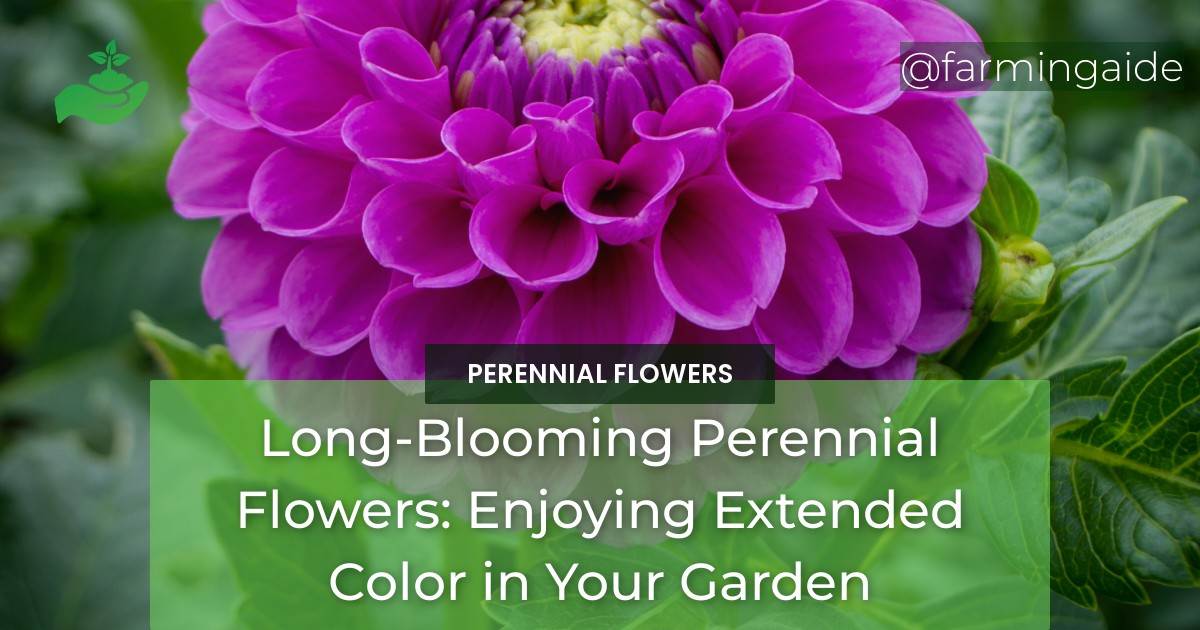Long-blooming perennial flowers are a garden enthusiast’s dream come true. Not only do they add pops of color and beauty to your garden, but they also provide several benefits that make them worth the investment. In this article, we will explore the many benefits of long-blooming perennial flowers, the top flowers to consider for your garden, and the best practices for planting and caring for them.
Benefits of Long-Blooming Perennial Flowers
Enjoy Extended Garden Color
The most obvious benefit of long-blooming perennial flowers is the extended color they provide in your garden. Unlike annuals that need to be replanted every year, perennials come back year after year, offering you a beautiful display of colors and textures for several seasons.
Low Maintenance
Perennial flowers are low maintenance, making them perfect for gardeners who don’t have much time to spare. Once established, most perennials require little watering, pruning, or fertilizing.
Cost-Effective
Although the initial investment in perennials is typically higher than annuals, their longevity makes them more cost-effective in the long run. You won’t need to spend money on replanting every year, so you’ll save money over time.
Top Long-Blooming Perennial Flowers
Coneflowers
Coneflowers are easy to grow and care for, and they bloom from mid-summer to early fall. They come in a range of colors, including pink, purple, and white, and attract butterflies and bees to your garden.
Black-Eyed Susan
Black-Eyed Susan is a bright and cheery flower that blooms from mid-summer to early fall. They have yellow petals and dark centers, and they attract butterflies and bees to your garden.
Daylilies
Daylilies are low maintenance and come in a variety of colors, including yellow, orange, and red. They bloom from early summer to late fall and can tolerate a variety of growing conditions.
Coreopsis
Coreopsis, also known as Tickseed, is a low maintenance perennial that blooms from early summer to late fall. They come in bright shades of yellow, pink, and red and attract pollinators to your garden.
Salvia
Salvia is a beautiful perennial that blooms from early summer to early fall. They come in a range of colors, including blue, purple, and red, and attract butterflies and hummingbirds to your garden.
Phlox
Phlox is a fragrant perennial that blooms from early summer to early fall. They come in shades of pink, purple, and white and attract butterflies and hummingbirds to your garden.
Veronica
Veronica is a low maintenance perennial that blooms from early summer to early fall. They come in shades of blue, pink, and white and can tolerate a variety of growing conditions.
ALSO READ
Planting and Caring for Long-Blooming Perennial Flowers
Choosing the Right Location
When planting long-blooming perennial flowers, it’s important to choose the right location. Most perennials require full sun, so make sure your garden gets at least six hours of sunlight a day. You should also choose a well-draining location, as perennials don’t like to sit in wet soil.
Soil Preparation
Before planting, prepare the soil by adding compost or other organic matter. This will help improve soil drainage and fertility, which will encourage healthy growth and blooming.
Watering
Once established, most perennials don’t require much watering. However, during the first season, you may need to water them regularly to help them get established. Water deeply once a week, rather than giving them frequent shallow watering.
Fertilizing
Most perennials don’t require much fertilizing, but you can give them a boost once a year with a balanced fertilizer in the spring. Follow the package instructions for application rates.
Pruning
Some perennials benefit from deadheading or cutting back after blooming. This encourages new growth and can prolong blooming. However, not all perennials require pruning, so make sure to research your specific plant’s needs.
Division
Over time, some perennials can become overcrowded and may require division. This involves digging up the plant, dividing it into smaller sections, and replanting. This is typically done in the spring or fall.
Conclusion
Long-blooming perennial flowers are a valuable addition to any garden. They provide extended color, are low maintenance, and are cost-effective. By choosing the right plants and following best practices for planting and care, you can enjoy a beautiful display of color in your garden for several seasons.


